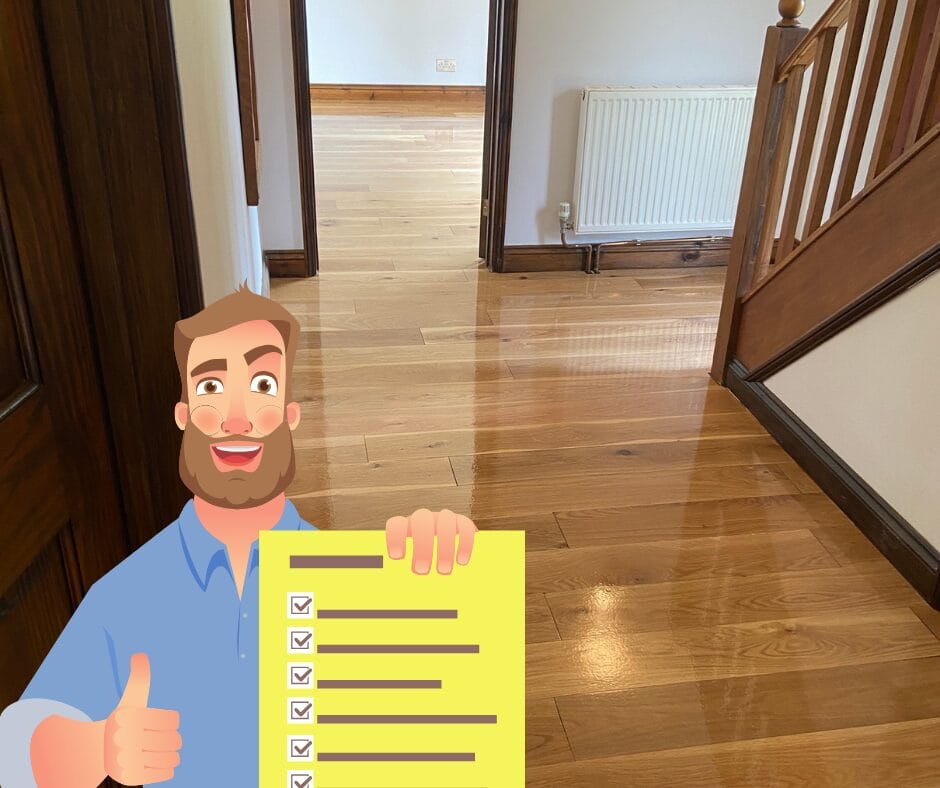Are you a busy homeowner in the Newmarket area looking to breathe new life into your wooden floors? Floor sanding might be the solution you’ve been searching for! In this blog post, we’ll explore “Floor Sanding in Newmarket: 7 Common Questions Answered” to help you make informed decisions and achieve stunning results for your home.
Check out these stunning transformations of before and after wood floor sanding and finishing:
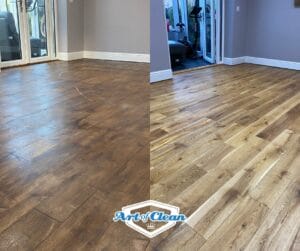
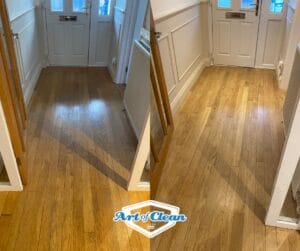
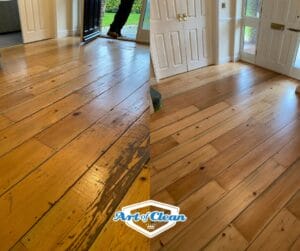
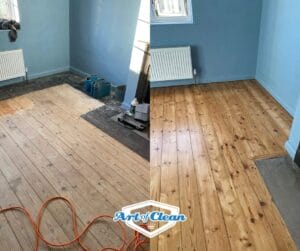
1. What is floor sanding, and why is it important?
Floor sanding is a magical transformation process for your worn-out wooden floors. It involves using abrasive materials like sandpaper to remove surface imperfections, scratches, and dents, restoring your floor’s natural beauty. Here’s why it’s crucial:
A. Enhances Appearance: Floor sanding reveals the hidden charm of your wooden floors, making them look brand new by showcasing their natural grain patterns and colours.
B. Increases Lifespan: By eliminating surface damage, sanding prolongs the life of your floors, saving you from costly replacements.
C. Easier Maintenance: A well-sanded floor is a breeze to clean and maintain. Say goodbye to trapped dirt and debris!
D. Prepares for Refinishing: If you plan to change the finish or colour of your floor, sanding is a necessary first step to ensure a durable, long-lasting result.
2. What types of floors can be sanded?
While wooden floors are the most common candidates for sanding, other floor materials can also be sanded depending on your needs:
A. Hardwood Floors: Solid wood planks or strips can be sanded multiple times throughout their lifespan, making them ideal for refinishing.
B. Engineered Wood Floors: These have a thin hardwood layer on top of a base. You can sand them, but consult a professional to ensure it’s done right.
C. Parquet Floors: Made from small wood pieces in geometric patterns, you can be sand, but they require specialised equipment and expertise.
D. Cork Floors: Soft and renewable cork you can sand with care.
E. Bamboo Floors: Sustainable and durable, bamboo can be sanded but requires attention due to its unique grain patterns.
3. Can I sand my floor myself, or should I hire a professional?
The decision to DIY or hire a professional depends on factors like skill level, budget, and project complexity:
A. Skill Level: If you’re confident in your DIY skills and have experience with floor sanding, go ahead. Otherwise, consult a professional.
B. Budget: Professionals may cost more upfront, but their expertise and equipment can save you money in the long run.
C. Time Constraints: Sanding can be time-consuming, especially for beginners. If you need more time, professionals can ensure efficiency.
D. Complexity: Some floors, like parquet, require specialised knowledge, making professional help a wise choice.
4. What equipment is needed for floor sanding?
To achieve a smooth, professional finish, you’ll need essential equipment:
A. Floor Sander: Choose from various types like drum sanders, orbital sanders, or belt sanders, depending on your project’s needs.
B. Edger: For areas the floor sander can’t reach, like edges and corners.
C. Sandpaper: Different grits for removing imperfections and achieving a smooth finish.
D. Vacuum Cleaner: Essential for keeping the workspace clean.
E. Protective Gear: Goggles, Knee pads, ear protection, and a dust mask to safeguard your health.
5. How long does the floor sanding process take?
The time needed depends on factors like area size, floor type, condition, and skill level. On average, a single room can take a few hours to a couple of days. Hiring a professional can expedite the process due to their expertise and equipment.
Remember, floor sanding is just one part of the overall refinishing project, and you may require additional time for tasks like applying finish and allowing it to dry.
6. What should I expect during and after the floor sanding process?
During sanding, expect dust and noise. Seal off the work area and inform your neighbours about the project. After sanding, your floor will have a smooth, even surface, ready for staining (if desired) and sealing with a protective finish.
7. How can I maintain my newly sanded floor?
Proper maintenance is important when trying to keep your floor looking its best:
A. Regular Cleaning: Vacuum or sweep or regularly to remove dirt and debris.
B. Protective Measures: Use felt pads under furniture legs and even area rugs in high-traffic areas to prevent wear and tear.
C. Humidity Control: Maintain indoor humidity levels to prevent wood damage.
D. Avoid Water Damage: Wipe up spills promptly and avoid excess moisture.
E. Refinish as Needed: Monitor your floor’s condition and refinish when necessary to maintain its appearance.
With the right approach and attention to detail, your newly sanded floor will be a beautiful and functional addition to your Newmarket home for years to come. Whether you choose to hire a professional or tackle the project yourself, understanding these basics of floor sanding will help you achieve stunning, long-lasting results. So, are you ready to transform your floors?

